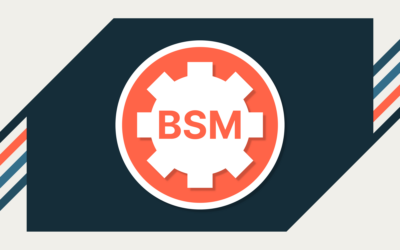Accrual accounting is considered the most accurate and comprehensive method of accounting, as it provides a complete picture of a company’s financial performance and position. However, accrual accounting introduces a whole new level of complexity into the accounting process. A consolidated spend management platform leverages accounting automation, including an automated GL sync, to reduce the potential drawbacks of accrual accounting.
What is accrual accounting?
Accrual accounting is a method of accounting in which revenues and expenses are recognized when they are earned or incurred, rather than when the actual cash is received or paid.
The main principle behind accrual accounting is that economic events should be recognized in the period in which they occur, rather than in the period in which there is a cash flow associated with them. This provides a more accurate picture of a company’s financial performance and position at any given time. Because it gives a better indication of any impending cash flow problems than cash-basis accounting, it is more effective for strategic planning.
The accrual accounting method is the most commonly used method of accounting in the business world. It is compliant with GAAP and is required for publicly trading companies in most countries. It is also used by many non-profit organizations, government agencies, and other entities.
What are the drawbacks to accrual accounting?
There are several potential drawbacks to using accrual accounting:
- It can be more complex than cash-based accounting because it requires using estimates and assumptions to determine when revenues and expenses should be recognized. This in turn results in having to compare the estimates to the accruals and make adjustments to the GL to reflect any discrepancies.
- There is a risk of understating expenses and overstating revenues if a service has been provided by the vendor even though there is no trigger in the form of a PO request or bill submission.
- It doesn’t necessarily reflect the current cash position of the company, as it recognizes revenues and expenses before they are actually received or paid.
- It can be more difficult to compare the financial performance of companies using different accounting methods because the timing of revenues and expenses may be different.
Despite these drawbacks, accrual accounting is generally thought to provide the most complete picture of a company’s financial performance and position.
How can I simplify accrual accounting?
Here are a few tips to make accrual accounting easier:
1. Use a platform that automates many of the tasks involved in accrual accounting.
This helps save time and reduce the risk of errors. Here’s how some accrual functions can be automated:
- Purchase orders. With an automated platform like Airbase, accruals can be automatically calculated for approved POs or POs pending approval. Once you enter the Service Start Date and the Service End Date, Airbase calculates a suggested accrual amount.
- Reimbursements. Airbase’s reporting functionality gives you the ability to filter outstanding reimbursement requests, so that you can accrue any reimbursements waiting for approval.
- Virtual cards. In the context of accrual-basis accounting, if a virtual card is a credit card, it can be used to track and record expenses as they are incurred, rather than waiting until they are paid. This can help ensure that expenses are recorded in the correct period and that the company’s financial statements accurately reflect its financial performance and position. If a virtual card is a debit card, both cash and accruals are one and the same. This applies to both approved virtual card transactions and those awaiting approval. However, it is important to ensure that virtual card transactions are properly documented and reconciled in order to maintain accurate and complete records for accrual accounting purposes.
A spend management platform captures and consolidates all pending and approved purchase requests, irrespective of whether the billing has been done and/or payment has been made.
2. Maintain accurate and complete records.
The accrual method requires the use of estimates and assumptions, so it is important to maintain an audit trail to ensure that these estimates and assumptions are as accurate as possible. This includes keeping all invoices, receipts, and other documentation related to revenues and expenses.
A platform that automatically attaches all related information to the correct transaction record ensures that records are complete.
3. Stay up to date with accounting standards and regulations.
Accrual accounting is governed by a number of accounting standards and regulations — it is important to stay up to date with these to ensure that you are complying with all the relevant requirements.
The move to accrual accounting often requires upgrading to a spend management system. Furthermore, contract and project lifecycle management tools can maximize pre-approved spend and capture services rendered in a complete, predictive, and accurate fashion, irrespective of the billing cycle and cash application.
Types of accruals.
- Straight-line accruals are those that are recognized evenly over a period of time, such as rent or salaries.
- Variable accruals differ depending on the level of activity or usage. For example, utilities or telephone expenses may be higher in some months and lower in others, depending on the amount of usage. To estimate variable accruals, you will need to consider the factors that are likely to impact the amount of the expense.
- Deferred accruals relate to expenses that have been incurred but are not expected to be paid until a future date. For example, a company may incur expenses for a marketing campaign that will not be paid until the campaign has been completed.
- Non-recurring accruals relate to expenses that are not expected to occur on a regular basis. For example, a company may incur expenses for a one-time event, such as a conference or trade show.
- Seasonal accruals relate to expenses that are typically higher during certain times of the year. For example, a retailer may have higher expenses during the holiday season due to increased demand for products.
Accrual accounting and the month-end close.
The month-end close process in accrual accounting involves completing all necessary accounting transactions and tasks for the current month in order to produce accurate financial statements and reports. This typically includes:
- Reviewing all accounts and transactions for the month, and reconciling any discrepancies between the accounts and the supporting documentation.
- Recording any revenues or expenses that have been earned or incurred but not yet recorded, such as unpaid invoices or unpaid expenses.
- Making any necessary adjustments to correct any errors or discrepancies in the financial statements.
- Transferring the balances of certain temporary accounts, such as revenue and expense accounts, to a permanent account, such as retained earnings.
- Generating the company’s financial statements, such as the balance sheet and income statement, based on the information in the company’s general ledger. A general ledger that is updated automatically throughout the month cuts hours off the monthly close process.
Find out how Airbase’s automated spend management system and GL integrations support accrual accounting. Schedule a demo with us!
Airbase is a NetSuite SuiteCloud Developer Partner.
 Jira Integration – Streamline Your Workflows
Jira Integration – Streamline Your Workflows  Ironclad Integration – Simplify Legal Operations
Ironclad Integration – Simplify Legal Operations  Asana
Asana 




